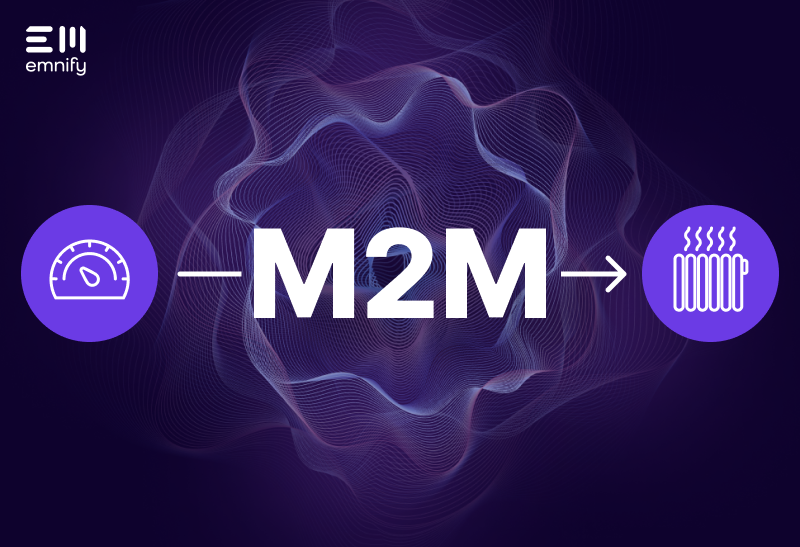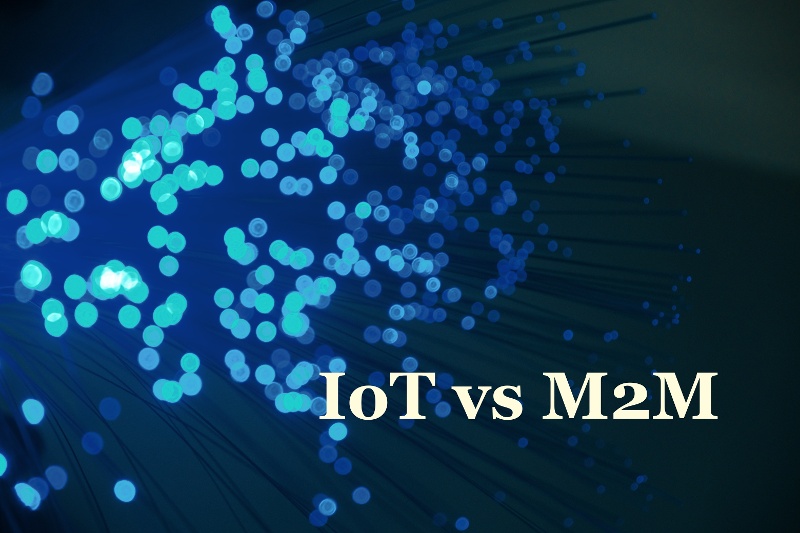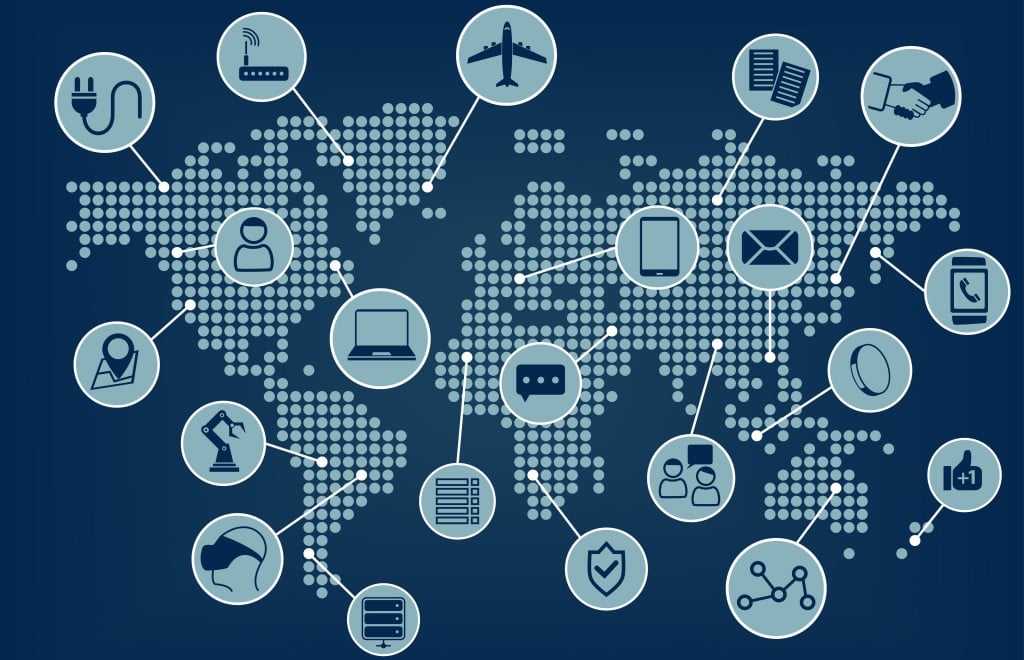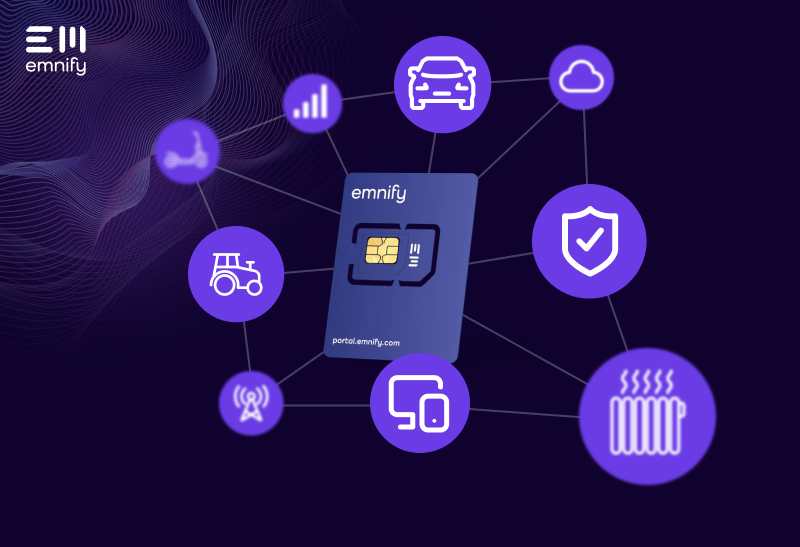

Quick definition: M2M technology refers to the components and applications that allow machine-to-machine communication. It generally requires some kind of sensor that measures data, network infrastructure that allows the transmission of this data, and another machine or network entity that can interact with it.
M2M technology has been around for decades. The concept was introduced back in 1968, when Theodore Paraskevako conceived of a way for telephones to exchange caller information, representing the first instance of machine-to-machine communication.
But while the concept may be more than 50 years old, it continues to yield cutting-edge applications, revolutionizing industries and improving how we work and live. The underlying technology is becoming more powerful, faster, more stable, more efficient, and more versatile, opening the door to innovative new opportunities. With M2M technology, you can remotely monitor, analyze, control, or automate just about anything.
This article will provide an overview of the benefits and some common applications of M2M technology. But first, you might be wondering: what’s the difference between M2M and IoT?
M2M vs. IoT
Spend much time researching or working with machine-to-machine communication, and you're bound to hear about IoT—the Internet of Things. M2M and IoT are typically used interchangeably to refer to connected devices. And while you’ll find plenty of “experts” suggesting differences, the reality is that M2M is simply an older term, and you’re more likely to hear it in certain countries or industries where it’s more commonly used than IoT. In the US, you’ll almost always hear people talking about IoT.
It’s true that M2M implies a direct point-to-point connection—one machine communicating with another—but it’s used more broadly than that. IoT also tends to involve devices communicating through the cloud, but it’s fine to use it to refer to point-to-point communication as well. In the industry, you’ll see both terms used to describe all manner of applications. There’s no functional difference between IoT and M2M.
Some people will say M2M technology relies on hardwired connections while IoT is wireless. This is wrong. They can both use wired or wireless connections. You may also hear that IoT requires an Internet connection. This is also wrong. IoT just needs a network connection.
Benefits of M2M technology
When machines can communicate through a network, it provides several significant benefits. Whether you build an M2M solution from scratch or retrofit a machine with M2M technology, here’s what this connectivity provides.
Visibility
Without M2M technology, the only way to see data relating to your machines is to manually collect or read it. For example, utility companies have traditionally needed to physically access their meters and manually enter the data about a customer’s electricity, gas, or water consumption. But a connected smart meter can automatically transmit this usage data to an application, where the provider can monitor and analyze it for billing and optimization purposes.
In many ways, M2M technology enables businesses and consumers to have eyes and ears on their devices at all times without being near them. Depending on the type of sensors and components an M2M device has, you may have remote visibility into its output, environmental conditions, location, usage, and more.
Automation
In many cases, the data an M2M device collects can be used to trigger actions in another device or application. Whether it transmits this data constantly, on demand, or only when specific conditions are met, it can set in motion “if this, then that” events based on predetermined thresholds.
One of the more common applications for automation in M2M technology is billing—service providers can use data from an M2M device to trigger the billing process. But there are countless other applications. A motion detector may activate an alarm, turn on a security camera, or send an alert when it detects movement. A heat sensor could turn an HVAC system on or off based on the temperature in a room or building. A predictive maintenance system might order parts or schedule service when a piece of equipment shows warning signs of imminent failure.
Automation essentially allows manufacturers and end users to make decisions in advance. Instead of waiting until a person examines the data and chooses how to proceed, the M2M technology is pre-programmed to take a specific action based on the information it collects.
Remote access
M2M technology can enable businesses and consumers to control and access devices remotely through an application. For businesses, this means they don’t have to be on-site to troubleshoot problems or react to situations. If a water meter detects abnormal usage indicating a leak or an open valve, an operator can remotely shut off the water to prevent further damage and waste. Systems can be controlled remotely through connected actuators that activate or deactivate in response to the application.
Scalability
Manual operation severely limits how many devices you can monitor and control at once. M2M technology enables businesses to deploy equipment on a much larger scale, automating processes where possible, and focusing their attention on the areas that actually need it, rather than trying to physically track everything at once.
Applications of M2M technology
M2M technology has had decades to develop, and it’s become the standard in numerous industries. While the number of IoT use cases is always growing, here are some of the more common places you see M2M technology at work.
Smart meters
Smart utility meters transmit data to and receive data from a network entity, such as an application where the utility data can be analyzed. This helps utility providers optimize resource allocation, automate billing, and avoid costly on-site meter reading, and it gives their customers more insight into their resource consumption. Smart submetering also enables providers and their customers to learn more about the energy usage of specific pieces of equipment, rooms, or processes.
Smart security
Modern security cameras and alarm systems are often connected to an application, allowing them to alert the end user when there’s activity. Users can also connect to these systems remotely to keep an eye on their business, home, pets, or valuables while they’re away.
Fleet management
GPS trackers and other telematics devices are critical components of fleet management. Whether you’re operating fleets of trucks or tracking construction equipment, you need to know where your assets are geographically located, how fast they’re moving, whether there are fault codes, and more. Connected GPS trackers can transmit location information and even diagnostics data to an application, where a fleet manager can coordinate their entire fleet and examine unusual activity.
Industry 4.0
The fourth industrial revolution has been all about leveraging connectivity to add automation and Big Data to manufacturing. Smart factories and power plants use connected sensors to measure performance and track processes from start to finish, making regular operations safer, more efficient, and more cost effective.
Build M2M technology with emnify
emnify is a leading cellular IoT connectivity provider. Our M2M SIMs enable devices to connect to more than 540 networks in over 195 countries, helping you stay connected wherever you deploy. Thousands of businesses rely on our connectivity to empower their M2M technology in a wide range of industries, including manufacturing, agriculture, energy, healthcare, retail, and more.
Want to see what emnify can do for you? Start a free trial or talk to an IoT expert today.
Get in touch with our IoT experts
Discover how emnify can help you grow your business and talk to one of our IoT consultants today!

Shannon has over seven years of experience communicating with audiences on behalf of businesses. She is passionate about making complex, technical topics easy to understand for readers of all backgrounds.


